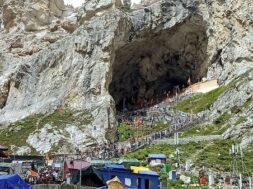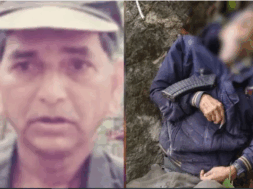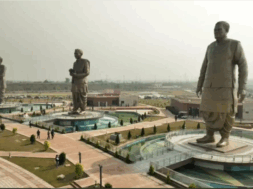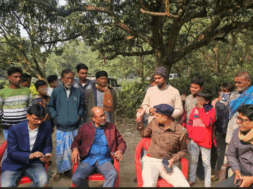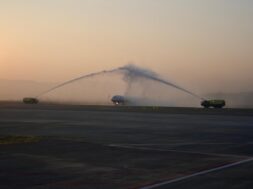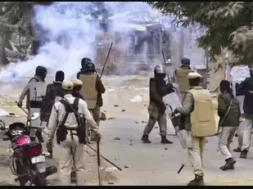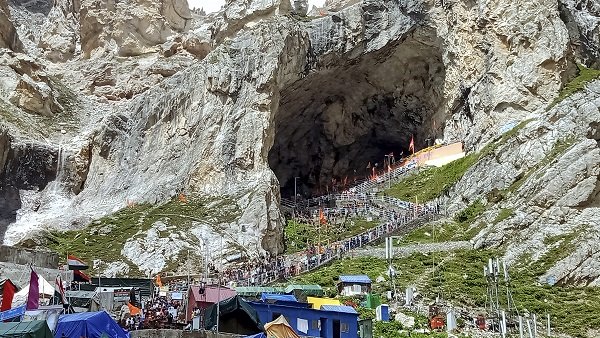
Manas Dasgupta
NEW DELHI, July 9: The death toll in the flash flood triggered by a cloudburst near the Amarnath cave shrine rose to 16 on Saturday while search is still on for another about 40 persons still reported “missing” even as about 15,000 stranded pilgrims were shifted to the lower base camp of Panjtarni, officials said on Saturday.
Searches for the missing people continued without break after flash flood and landslides rummaged through tents and community kitchens on Friday afternoon. Senior officials said 25 injured people have been shifted to hospitals while many people are believed to be still trapped under the debris.
According to an Army official, mountain rescue teams and lookout patrols and sniffer dogs have been pressed into the search and rescue operation.
However, undaunted by Friday’s mishap, the tenth batch of over 6,100 Amarnath pilgrims left Jammu city amid tight security on Saturday for the twin base camps of 3,880-metre-high cave shrine of Amarnath in south Kashmir Himalayas, officials said.
In one of the major peacetime rescue operations, the Indian Army has deployed men and machinery including latest equipment to rescue the Amarnath pilgrims who were injured in the flash flood triggered by heavy rain, an Army official said in Srinagar on Saturday.
The rescue team rushed to the site as soon as they got the information about casualties in the flash floods that occurred on Friday evening, the official said. He said an infantry battalion led by a Colonel along with Quick Reaction Teams, an additional company of personnel from the Rashtriya Rifles Sector and a team from Special Forces reached the holy cave along with specialised rescue equipment to undertake the operation.
“Through the night, the senior Army officers of the infantry battalion and Rashtriya Rifles oversaw and coordinated rescue operations from the cave and Nilgrar. Medical resources at the cave and at Nilgrar were activated and additional resources deployed,” the official said. He said nine surveillance detachments with hand-held thermal imagers, night vision devices and other gadgets were deployed for the search operations.
About 15,000 pilgrims have been moved to safety from near the holy cave shrine of Amarnath after the flash flood. Most of the pilgrims who were stranded near the holy cave area last evening have been shifted to Panjtarni, which serves as the base camp for Amarnath Yatra. Twenty-one injured pilgrims were airlifted to Baltal on Saturday morning.
“Sixteen people have been confirmed dead. About 40 still seem to be missing. No landslide have been reported, but there is continuous rain though it is not hampering rescue work. Four NDRF teams with over 100 rescuers are engaged in rescue work. Besides, Indian Army, SDRF, CRPF and others continue to rescue,” NDRF Director General Atul Karwal said. Pilgrims who were safely evacuated from the affected areas have narrated harrowing accounts of the cloudburst-triggered floods swamping tents and community kitchens with mud and large rocks. Some of the pandals that were two kilometres away from the cloudburst site were also affected, they said.
“Within 10 minutes of the cloudburst, eight casualties were reported. The water carried a large number of stones with it. There were approximately 15,000 pilgrims who came for the pilgrims. The pilgrims continued to come despite heavy rains,” a pilgrim said.
“Situation is under control, rains are still going on. Looking at the hazard level, the Amarnath Yatra has been halted temporarily due to the area being inundated,” said ITBP spokesperson PRO Vivek Kumar Pandey.
The cloudburst, which was reported at around 5:30 pm, triggered flash floods that hit the base camp outside the shrine, damaging 25 tents and three community kitchens where the pilgrims are served food, according to officials. The area received 31 mm rainfall from 4:30 pm to 6:30 pm, according to the automatic weather station at the holy cave.
The National Conference (NC) president Farooq Abdullah on Saturday said the government should order an inquiry to ascertain how tents and community kitchens were set up in such a highly-vulnerable area close to the Amarnath cave shrine.
“We are hopeful that the government will form an inquiry commission to know how it happened and why it happened,” Abdullah told reporters. The former Jammu and Kashmir chief minister questioned the decision to set up tents and “langar” (community kitchen) at such a vulnerable area.
“The location of the tents and langars is such that I do not think these things were done there earlier. Panjtarni is such a nice area for this. This needs to be investigated, may be it is a human error,” Abdullah said.
President Ram Nath Kovind and prime minister Narendra Modi have expressed anguish over the loss of lives. Union Home Minister Amit Shah has directed the central forces and Jammu and Kashmir administration to ensure swift rescue and relief. The Jammu and Kashmir administration has set up four helpline numbers where people can get information about the incident.
The 43-day Amarnath yatra began after a gap of three years on June 30 from the twin routes — the traditional 48-km from Nunwan in Pahalgam in south Kashmir’s Anantnag, and the 14-km shorter but steep Baltal route in Ganderbal district of central Kashmir. In 2019, the yatra was cancelled midway ahead of the Centre scrapping Article 370 provisions of the Constitution. The pilgrimage did not take place in 2020 and 2021 due to the Covid pandemic.
The India Meteorological Department (IMD) on Friday said the deaths and destruction near the Amarnath cave shrine in south Kashmir were due to a highly localised rain event and not due to a cloudburst. According to weather scientists, the shrine reported 31 mm of rainfall between 4.30 p.m. and 6.30 p.m. on Friday, which is quite low to be categorised as a cloudburst.
“The flash floods could have been triggered due to rainfall in the higher reaches of the mountains near the Amarnath cave shrine,” IMD Director General Mrutyunjay Mohapatra. According to the IMD, a rain event is categorised as a cloudburst if a weather station receives 100 mm of rain in one hour.
